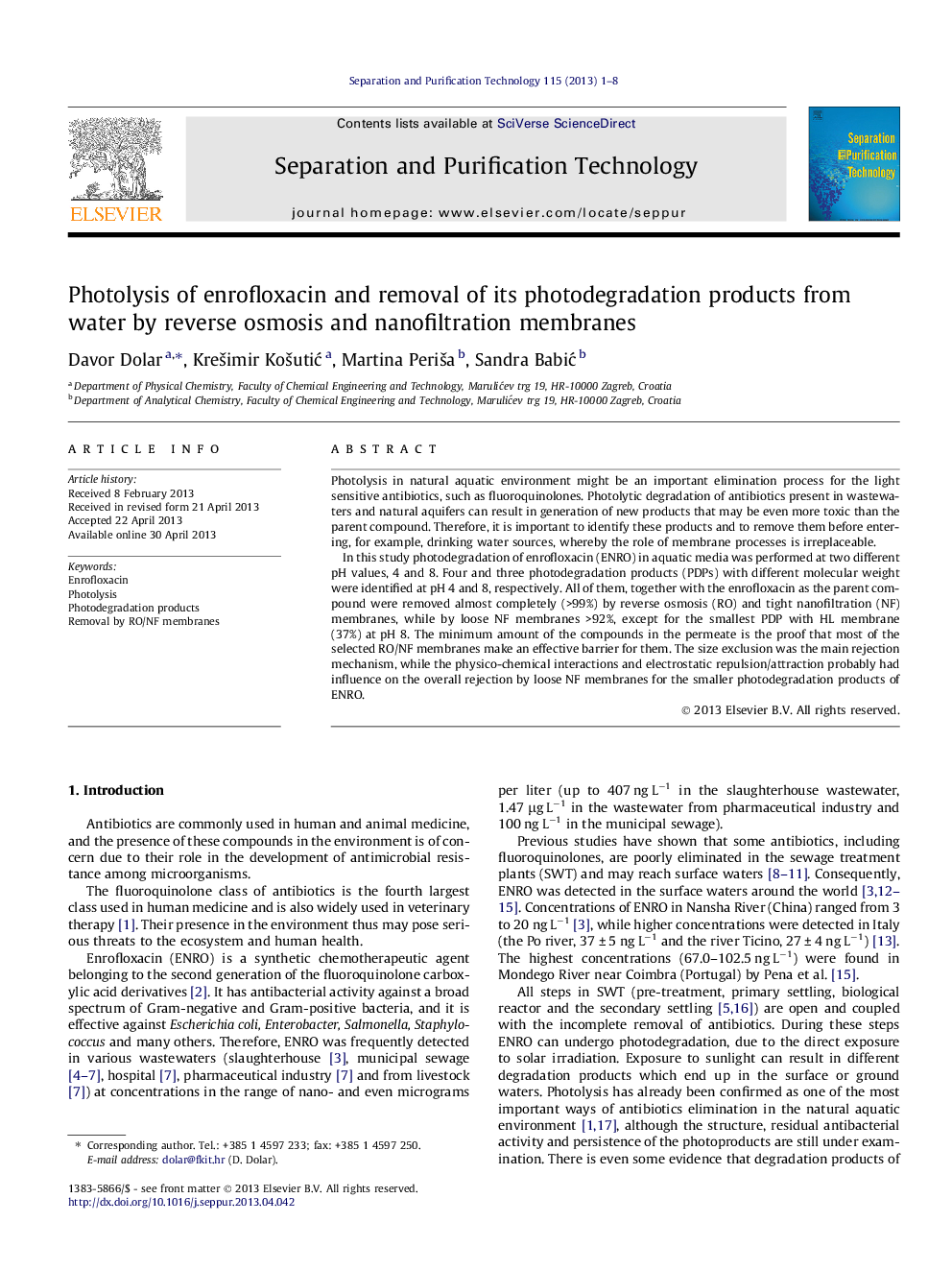| Article ID | Journal | Published Year | Pages | File Type |
|---|---|---|---|---|
| 641573 | Separation and Purification Technology | 2013 | 8 Pages |
Abstract
In this study photodegradation of enrofloxacin (ENRO) in aquatic media was performed at two different pH values, 4 and 8. Four and three photodegradation products (PDPs) with different molecular weight were identified at pH 4 and 8, respectively. All of them, together with the enrofloxacin as the parent compound were removed almost completely (>99%) by reverse osmosis (RO) and tight nanofiltration (NF) membranes, while by loose NF membranes >92%, except for the smallest PDP with HL membrane (37%) at pH 8. The minimum amount of the compounds in the permeate is the proof that most of the selected RO/NF membranes make an effective barrier for them. The size exclusion was the main rejection mechanism, while the physico-chemical interactions and electrostatic repulsion/attraction probably had influence on the overall rejection by loose NF membranes for the smaller photodegradation products of ENRO.
Related Topics
Physical Sciences and Engineering
Chemical Engineering
Filtration and Separation
Authors
Davor Dolar, KreÅ¡imir KoÅ¡utiÄ, Martina PeriÅ¡a, Sandra BabiÄ,
